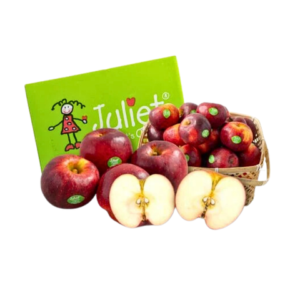news
The Ultimate Guide to Selecting and Storing Fresh Meat and Fish: From Market to Table
Selecting and storing fresh meat and fish can feel like a daunting task, but it is an essential skill for any home cook. The quality of your ingredients is the foundation of a delicious and healthy meal, and knowing how to choose and handle fresh protein is key to ensuring both flavor and safety. This comprehensive article will serve as a practical guide, walking you through the signs of freshness, the best practices for safe storage, and the small but crucial details that can make all the difference in your cooking.
At the heart of a great meal is a great ingredient. For meat and fish, freshness is paramount. It affects not only the taste and texture of your dish but also its safety. A piece of fresh fish will have a clean, oceanic smell, not a strong or “fishy” odor. Its eyes will be clear and bulging, its skin shiny, and its gills a vibrant red. Similarly, fresh meat should have a firm texture, a rich color, and a clean, almost neutral smell. Any sour or off-putting odor is a clear sign that the meat is not fresh.

The Art of Selection: A Sensory Approach
Choosing fresh meat and fish is a sensory experience that goes beyond simply reading the label.
For Fish: When at the fish counter, don’t be afraid to ask to smell the fish. A fresh fish should smell clean, like the ocean. Its skin should be shiny and moist, not dry or dull. For whole fish, check the eyes—they should be clear, bright, and bulging, not cloudy or sunken. The gills should be a vibrant red. If you are buying fillets, look for a firm, translucent flesh that is free of any gaps or discoloration.
For Meat: When buying meat, the color is a good indicator of freshness. Beef should have a rich, red color, while pork should be a light pink. Chicken should be pale pink. The texture is also important; it should be firm to the touch and not have a slick or slimy feel. Smell is a key indicator. Fresh meat should have a faint, clean smell, and any sour or unpleasant odor is a red flag.
The Science of Storage: Keeping It Fresh and Safe
Proper storage is crucial for maintaining the quality and safety of your meat and fish.
Refrigeration: The most important rule of thumb is to keep meat and fish cold. As soon as you get home from the store, transfer your purchases to the coldest part of your refrigerator, which is usually the bottom shelf. Keep them in their original packaging or, for an extra layer of protection, place them in a sealed container to prevent any juices from leaking and contaminating other foods.

Freezing: Freezing is an excellent way to extend the shelf life of meat and fish. To freeze properly, remove the meat or fish from its store packaging and wrap it tightly in plastic wrap or an airtight freezer bag. This prevents freezer burn, which can affect the flavor and texture. Label the package with the date, and remember to use it within a few months for the best quality.
Key Tips for a Better Cooking Experience
Beyond selection and storage, a few key practices can make a world of difference.
The Cold Chain: The “cold chain” refers to keeping food at a consistent, safe temperature from the moment it is harvested or caught until it reaches your kitchen. To maintain the cold chain, bring an insulated bag with an ice pack to the store, especially if you have other errands to run.
Thawing: The best way to thaw frozen meat or fish is slowly in the refrigerator. This method is the safest as it prevents the outer layers from warming to unsafe temperatures while the inside is still frozen. For a quicker thaw, you can submerge the sealed package in cold water, changing the water every 30 minutes.

Preparation: Before cooking, it is a good idea to pat your meat or fish dry with a paper towel. This helps to create a better sear and a more flavorful crust. Remember to wash your hands and all surfaces that have come into contact with raw meat or fish to prevent cross-contamination.
In conclusion, selecting and storing fresh meat and fish is a skill that can be mastered with a little practice and attention to detail. By taking the time to learn the signs of freshness and by following a few simple storage and preparation rules, you can ensure that your meals are not only delicious but also safe and healthy. It is a small but essential part of the culinary journey, and it’s a skill that will pay dividends in every meal you cook.


